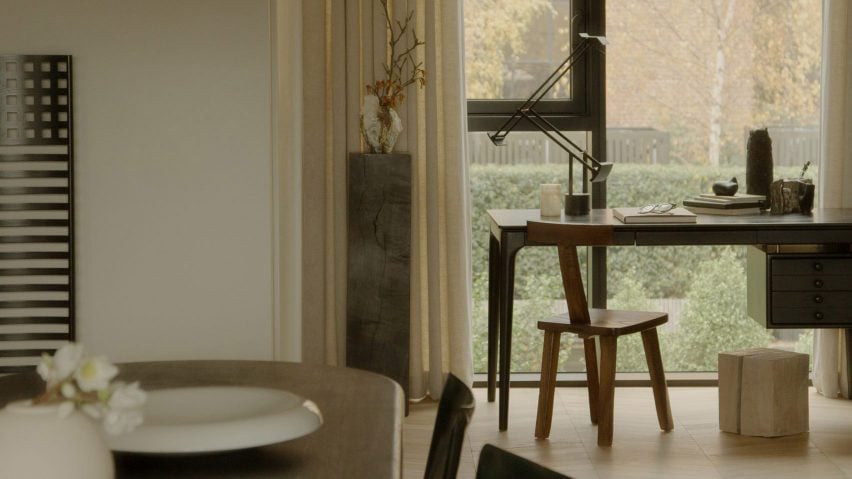
Studio Est adds "brutalist elements" to Battersea Power Station apartment
London interiors firm Studio Est referenced the industrial heritage of Battersea Power Station when creating the interiors for this apartment set within the redeveloped landmark.
The apartment's owner wanted to transform the empty shell into a space that would reflect both his personal tastes and the home's setting within the former art deco power station.
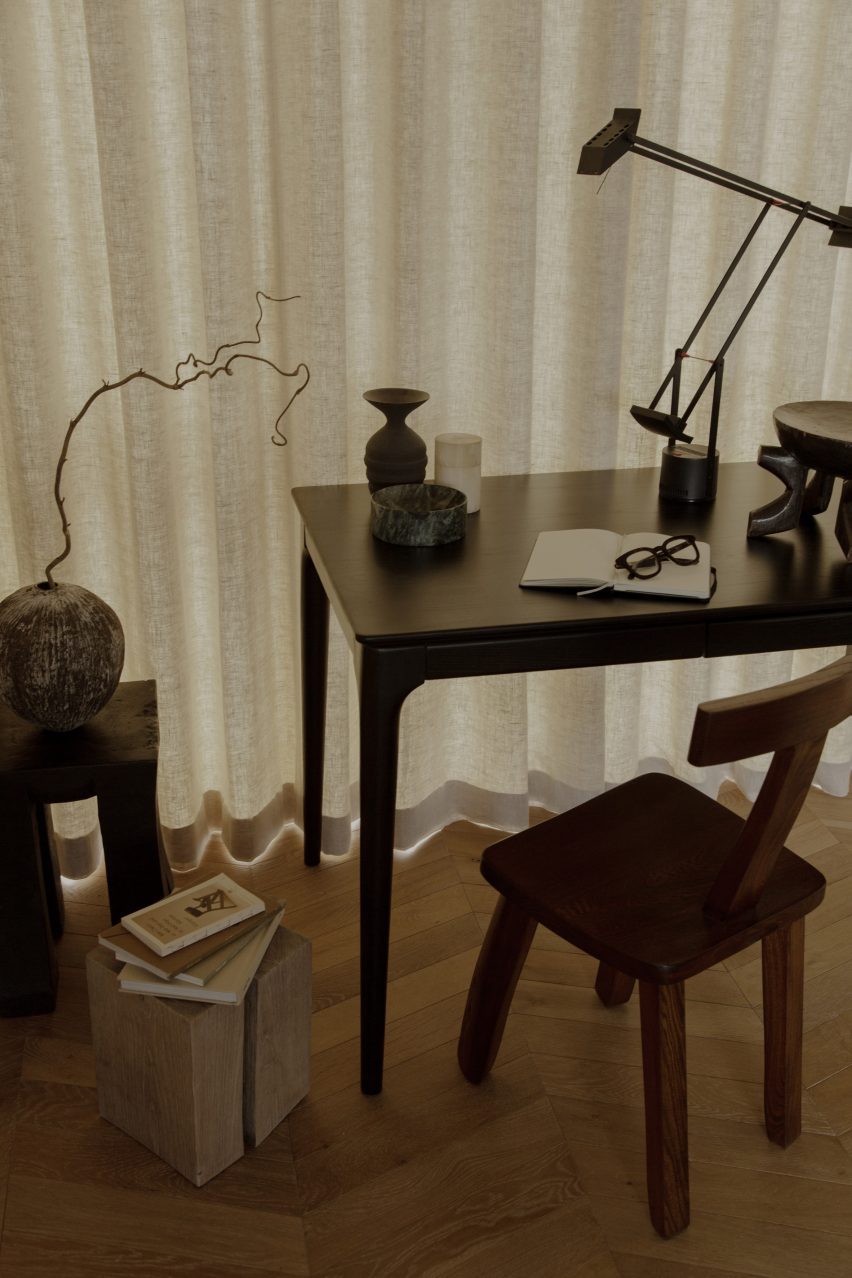
Known for its quiet luxury interiors, Studio Est applied a palette of subtle neutral shades to unify the apartment's open-plan spaces and provide a consistent backdrop for various characterful furnishings and artworks.
"We wanted to keep it simple but introduce subtle brutalist elements that evoke the building's history," founder Louise East told Dezeen. "These are complemented by softer textures that add a more feminine touch."
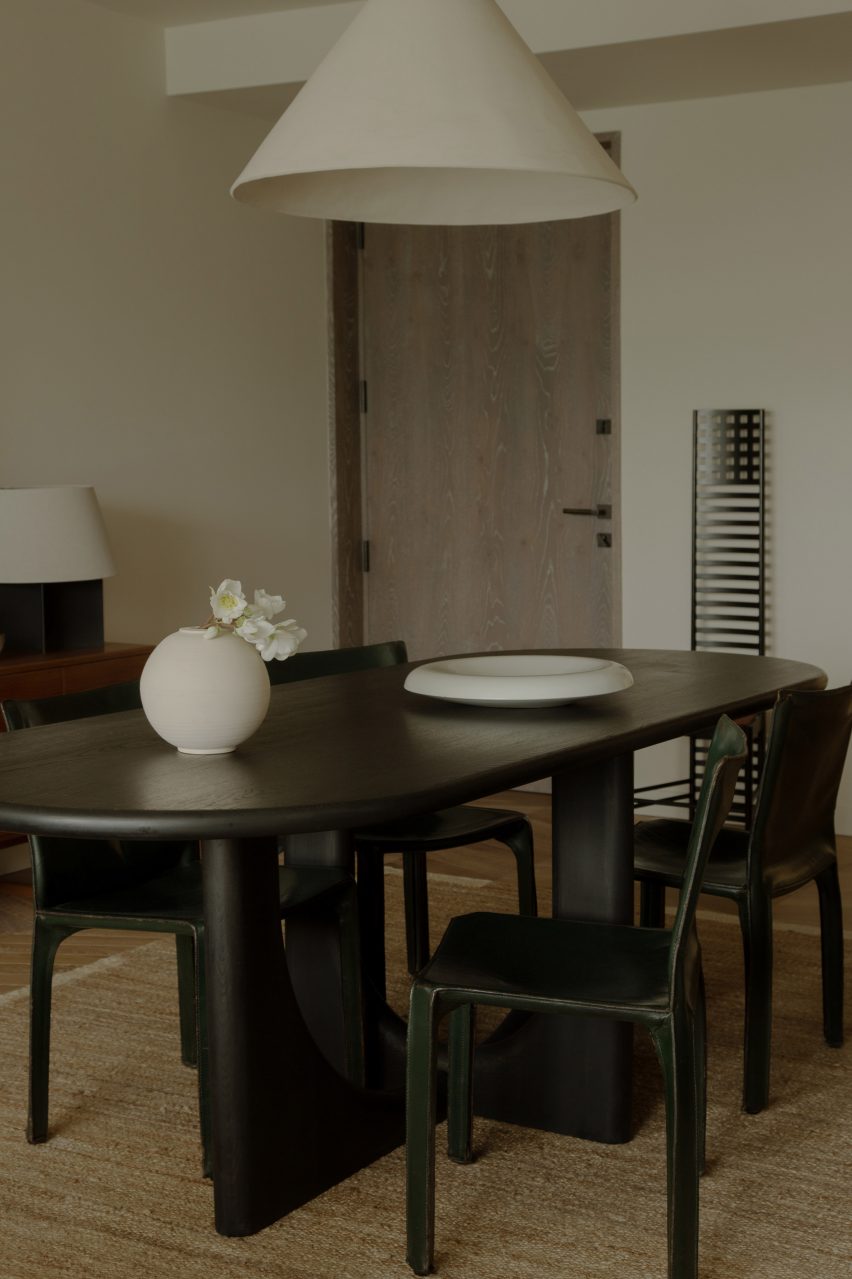
Although some areas of the redeveloped power station feature steel beams and other industrial details, East found the apartment entirely devoid of original elements.
So the studio turned to furniture, artwork and accessories to introduce character and visual interest to the living spaces.
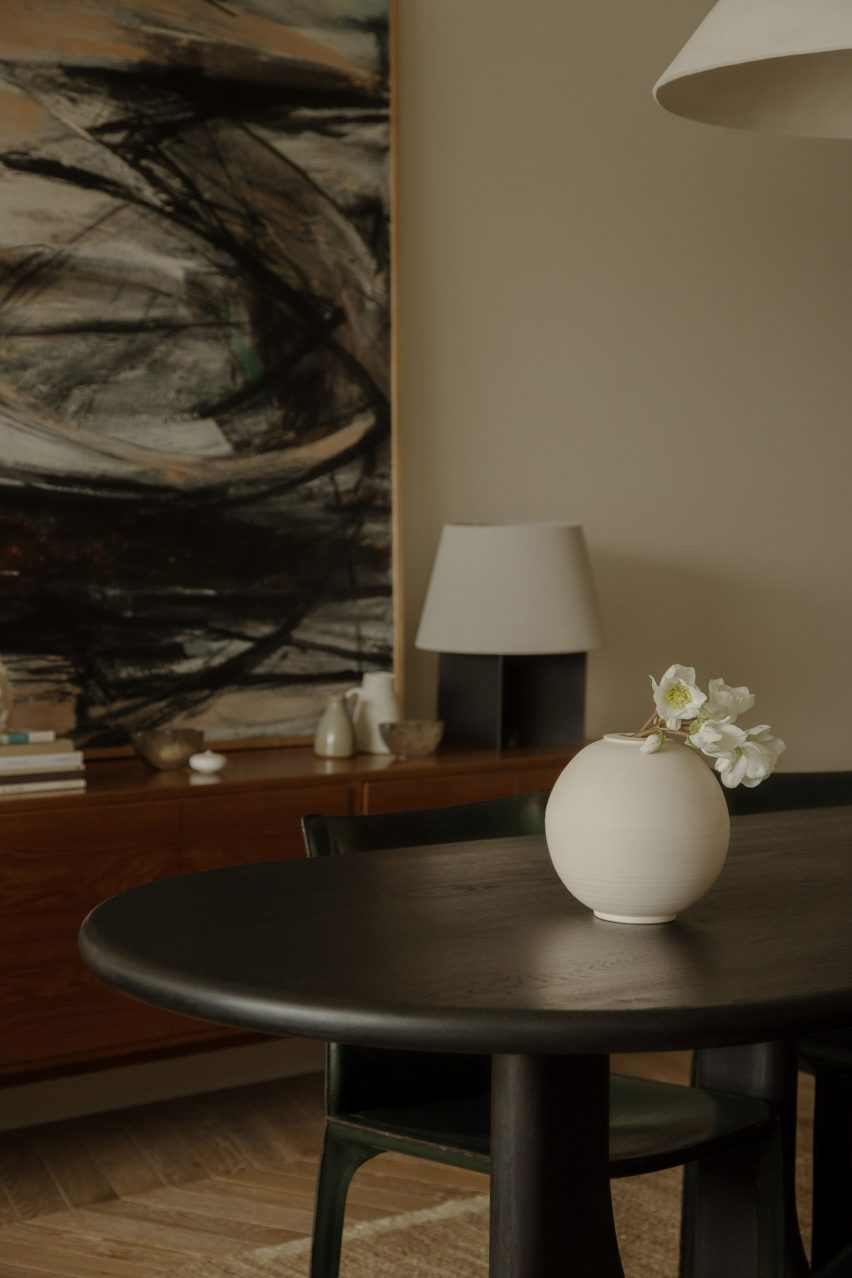
Dramatic pieces, including a large painting in the dining room and a bespoke geometric sofa in the lounge area, were chosen to ground these spaces and introduce a masculine feel.
East then layered these with textural details including cushions, lampshades and linen-wool blend curtains, all of which were custom-made for the project.
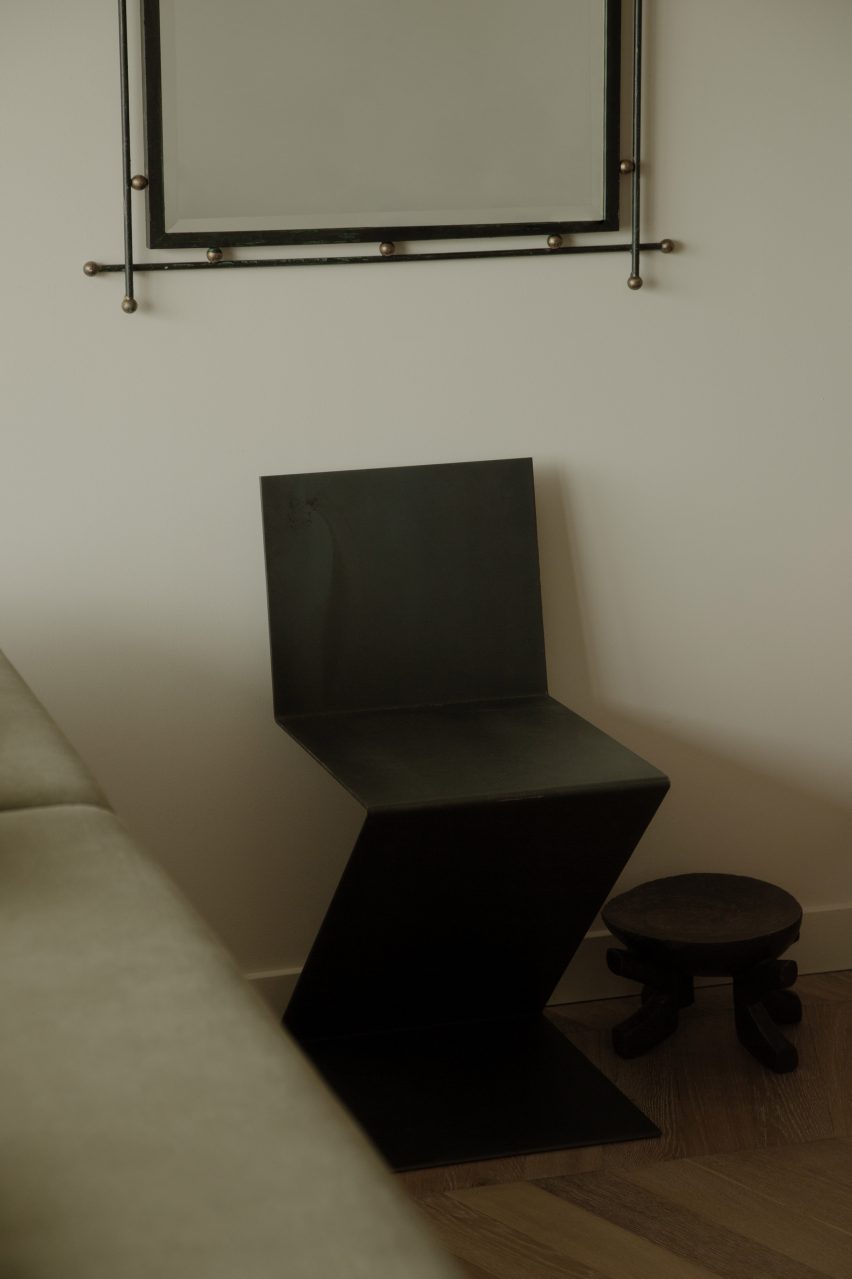
Alongside the bespoke items, Studio Est sourced various vintage pieces from London store Monument including leather chairs by Italian designer Mario Bellini, which surround the dark wooden dining table.
A Hill House Chair by Scottish art deco architect Charles Rennie Mackintosh and a metal reinterpretation of Gerrit Rietveld's seminal Zigzag chair also feature in the dining room.
The two bedrooms display distinctly different approaches to colour and materiality. The principal bedroom is painted in a rich terracotta hue that lends the space a warm, enveloping atmosphere, while the second bedroom incorporates textures chosen to complement the adjacent gardens.
"Although it's an open-plan apartment, we didn't want all the rooms to look the same," said East, who established her studio in 2020 after 15 years of working for other architects and interior designers including Russell Sage and Martin Brudnizki.
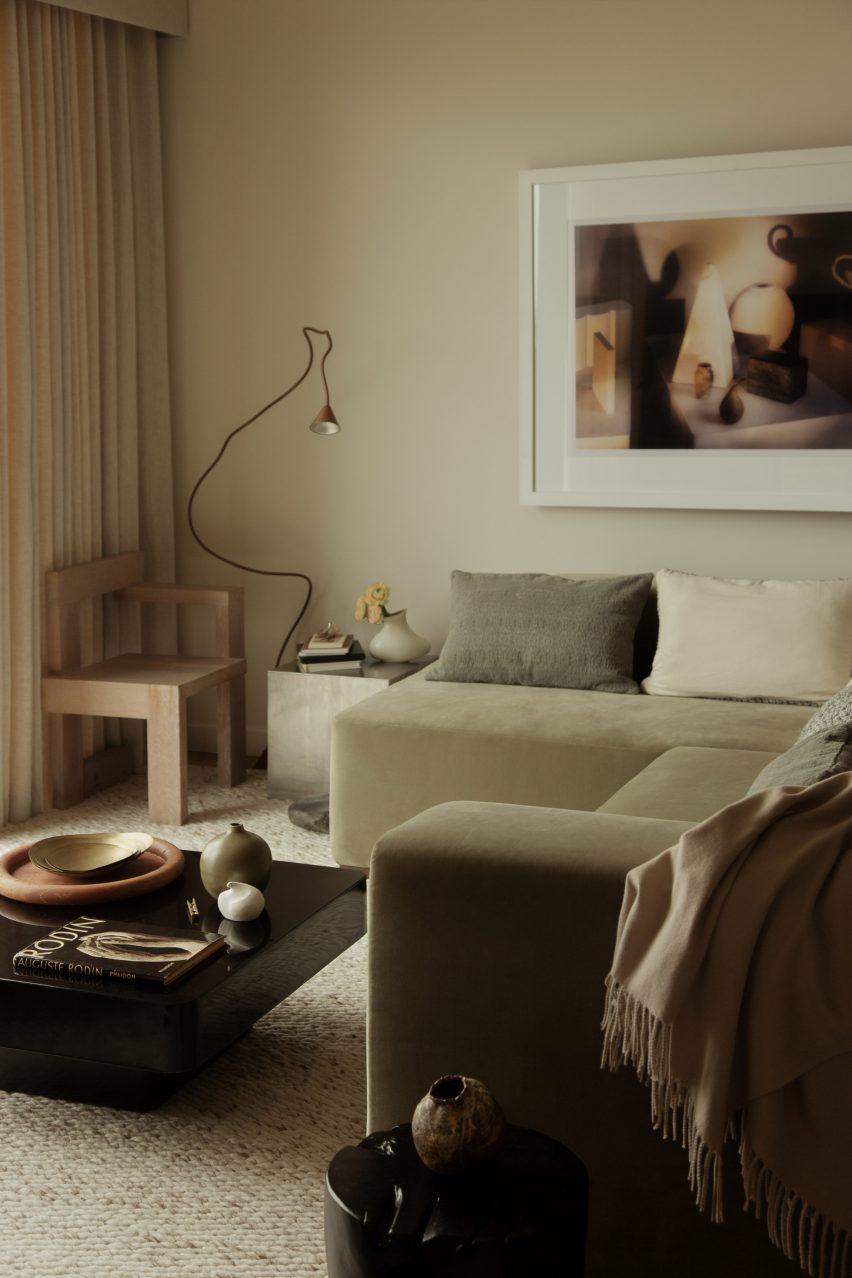
"It's good to be able to move from one space to another and have a different look and feel," she added. "The main bedroom is intentionally different to the living areas because we wanted to make this a space where the client can come after a day's work and feel comfortable reading a book."
Throughout the apartment, the owner's ceramics collection is displayed on characterful plinths, carefully positioned to emphasise specific views within the spaces and of the landscaped gardens outside.
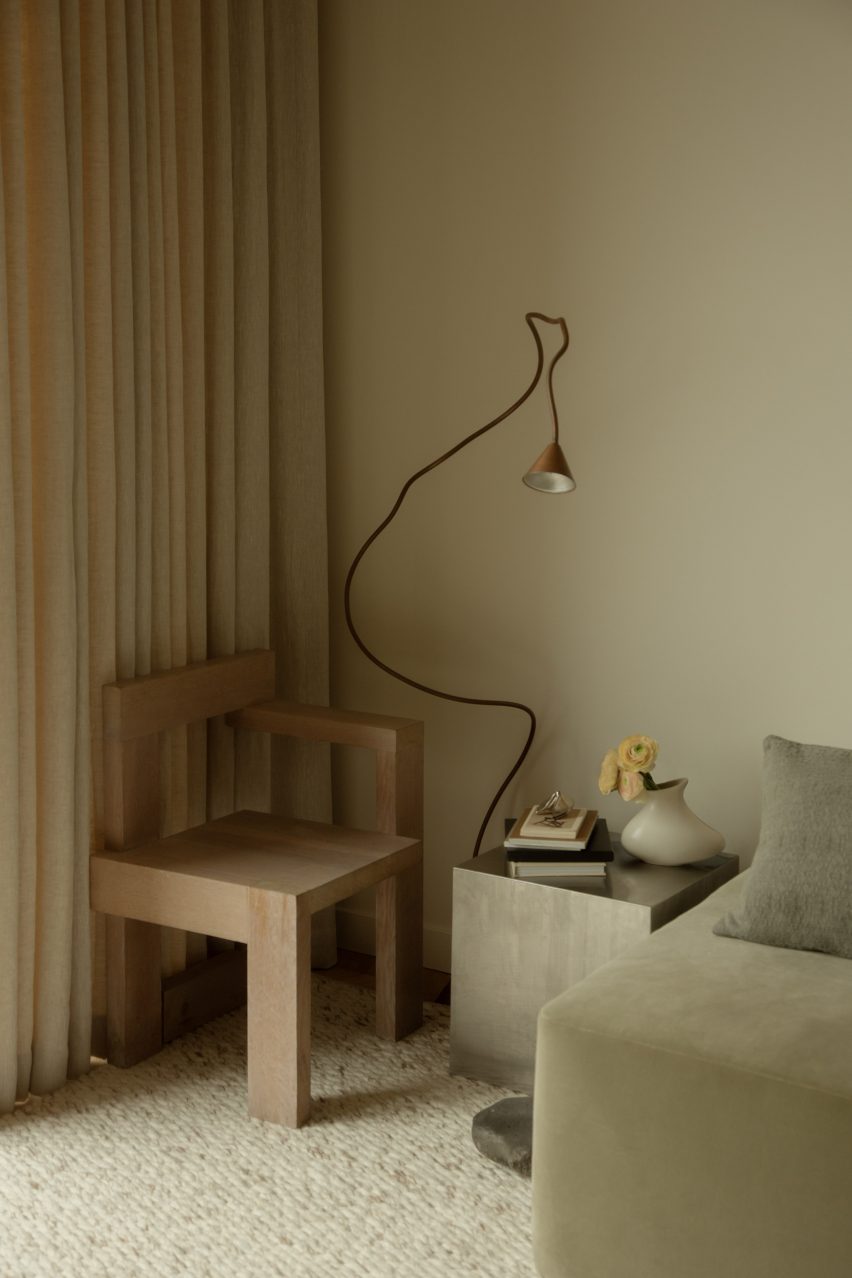
Battersea Power Station was designed by British architect Giles Gilbert Scott and built by the London Power Company in several phases between 1929 and 1955. It was decommissioned in 1975 and subsequently given Grade II listed status.
A lengthy redevelopment of the site on the south bank of the River Thames introduced accommodation, hospitality, offices and retail space while preserving the building's iconic chimney stacks and facades.
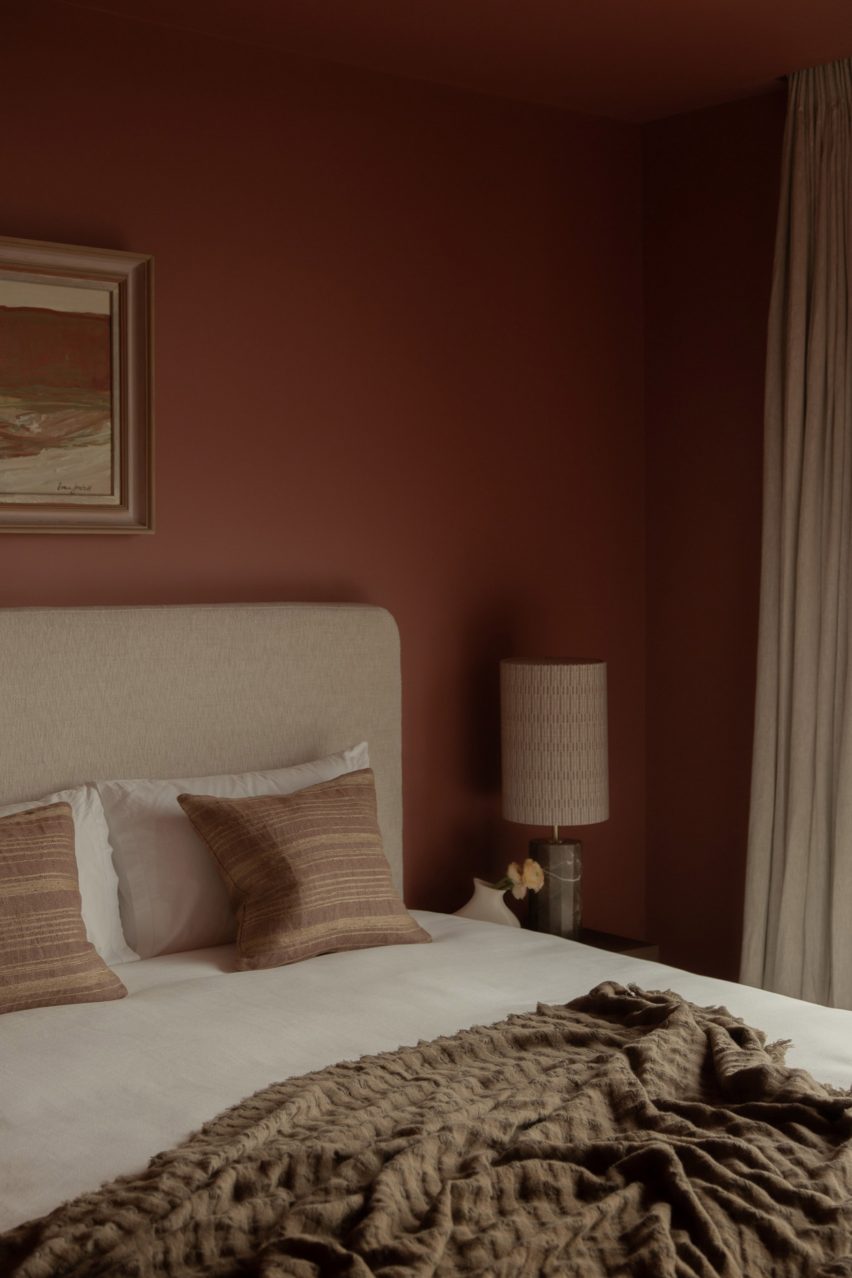
London architecture firm WilkinsonEyre oversaw the restoration and conversion of the former power station, which now features a glass lift within one of its chimneys.
UK studio Foster + Partners designed an office for technology brand Apple inside the building as well as a store for the company that retains four original brick pillars.
The photography is by Thea Lovstad.